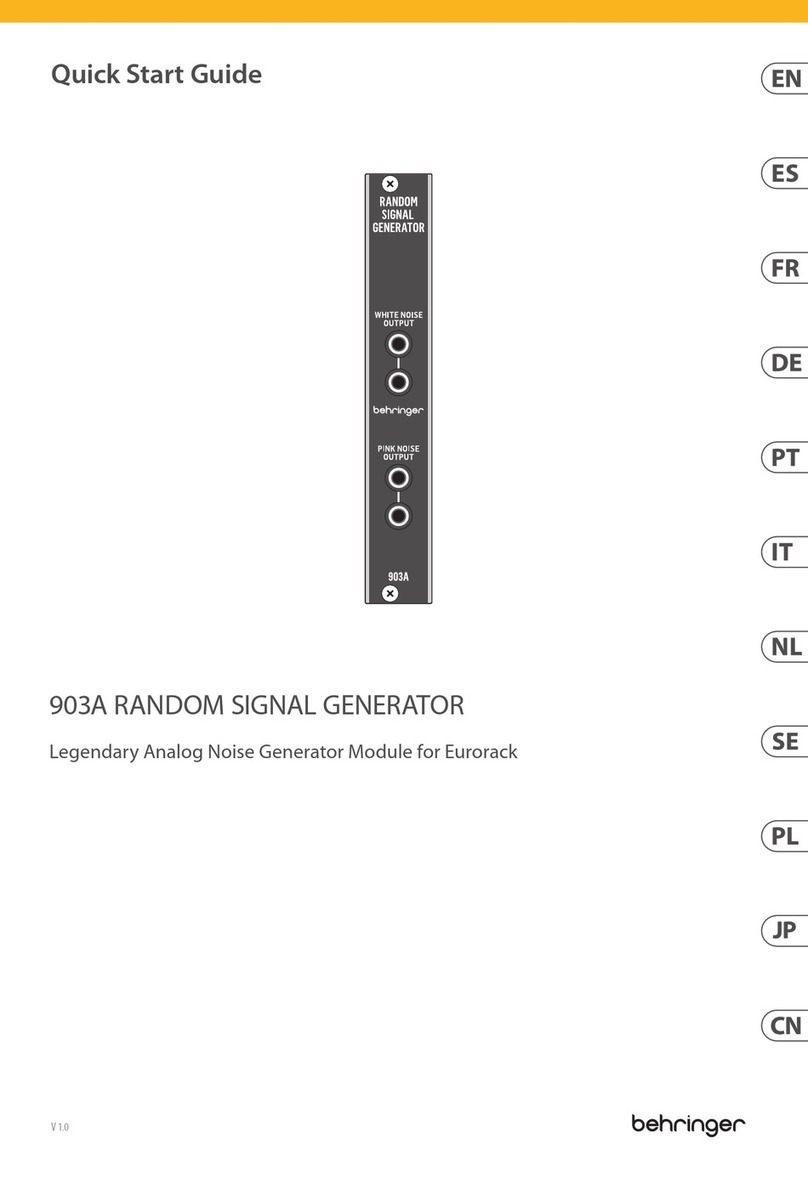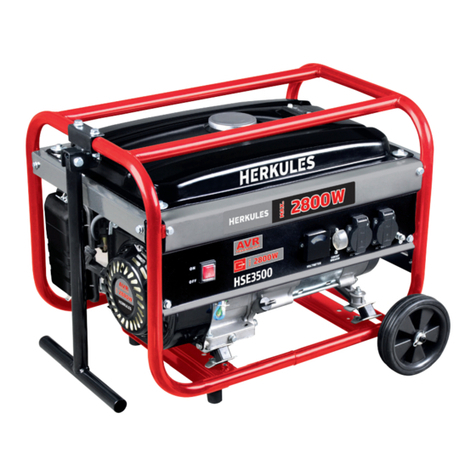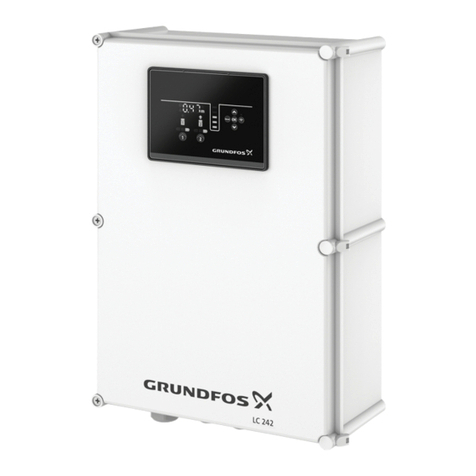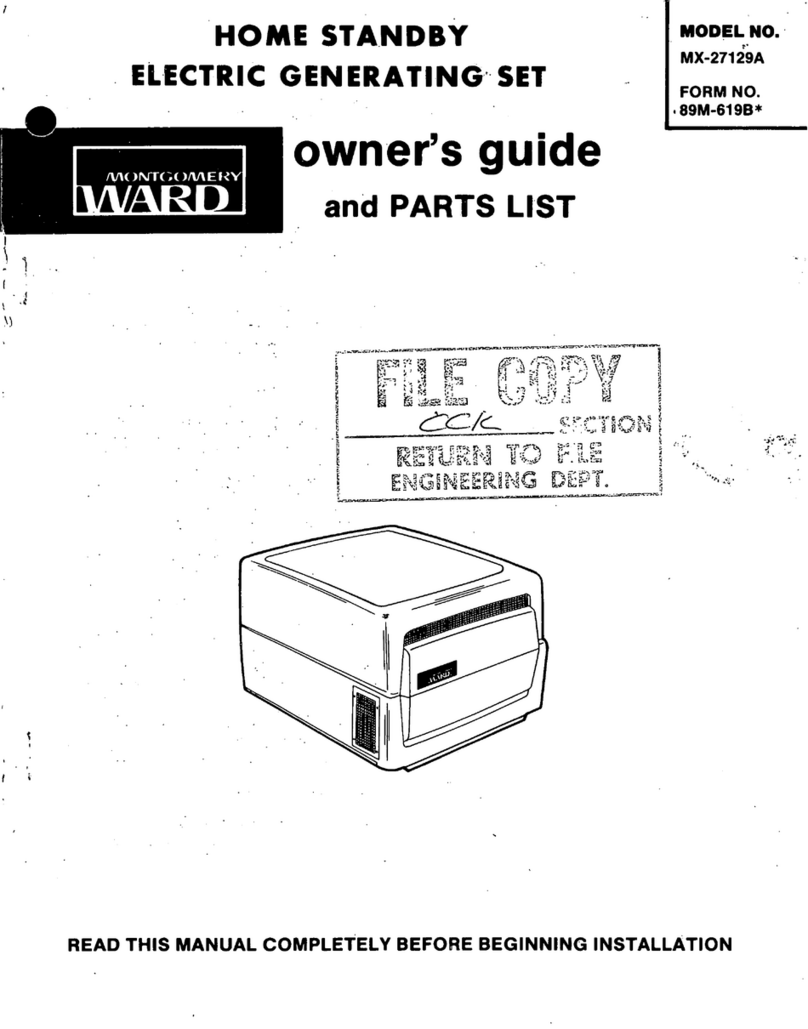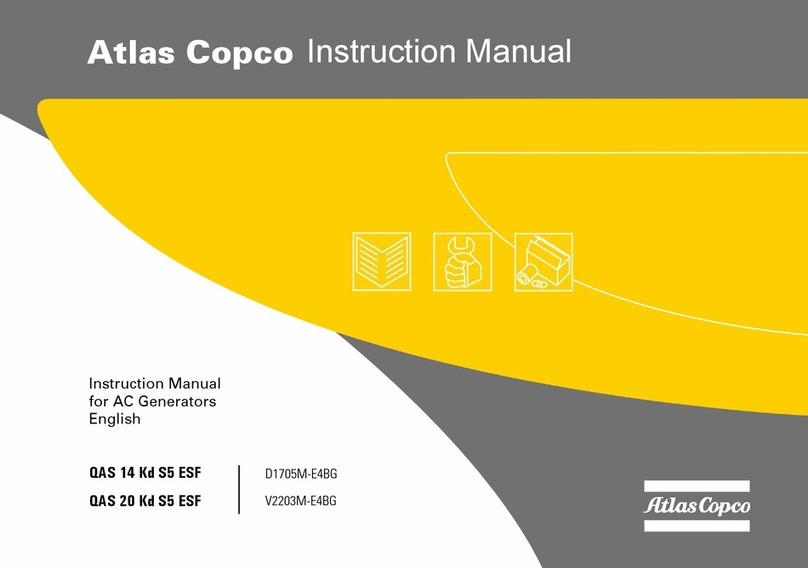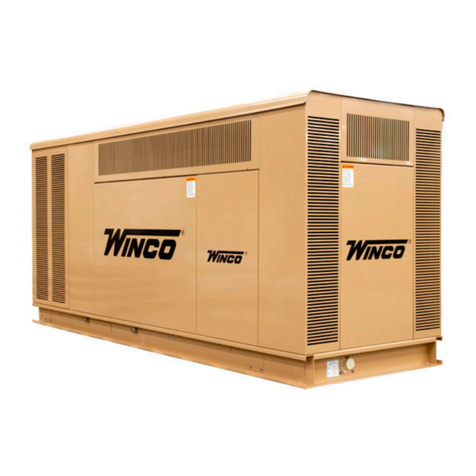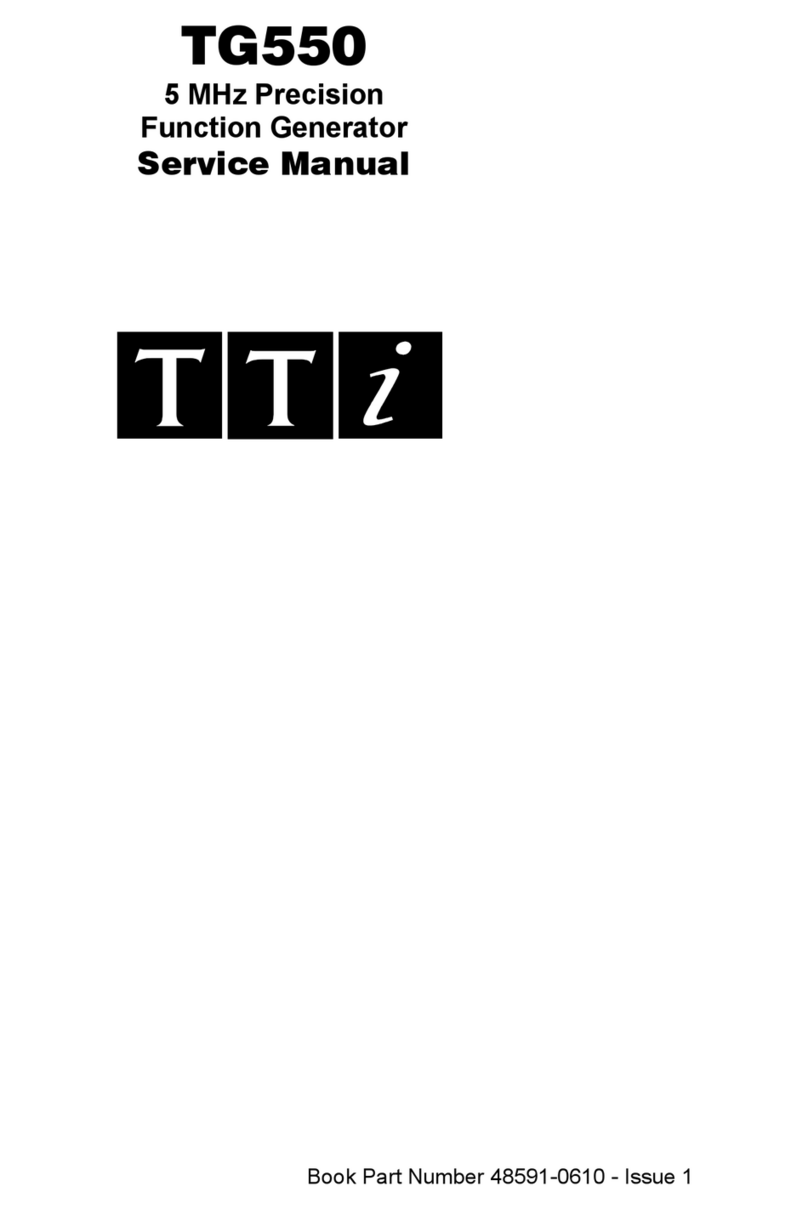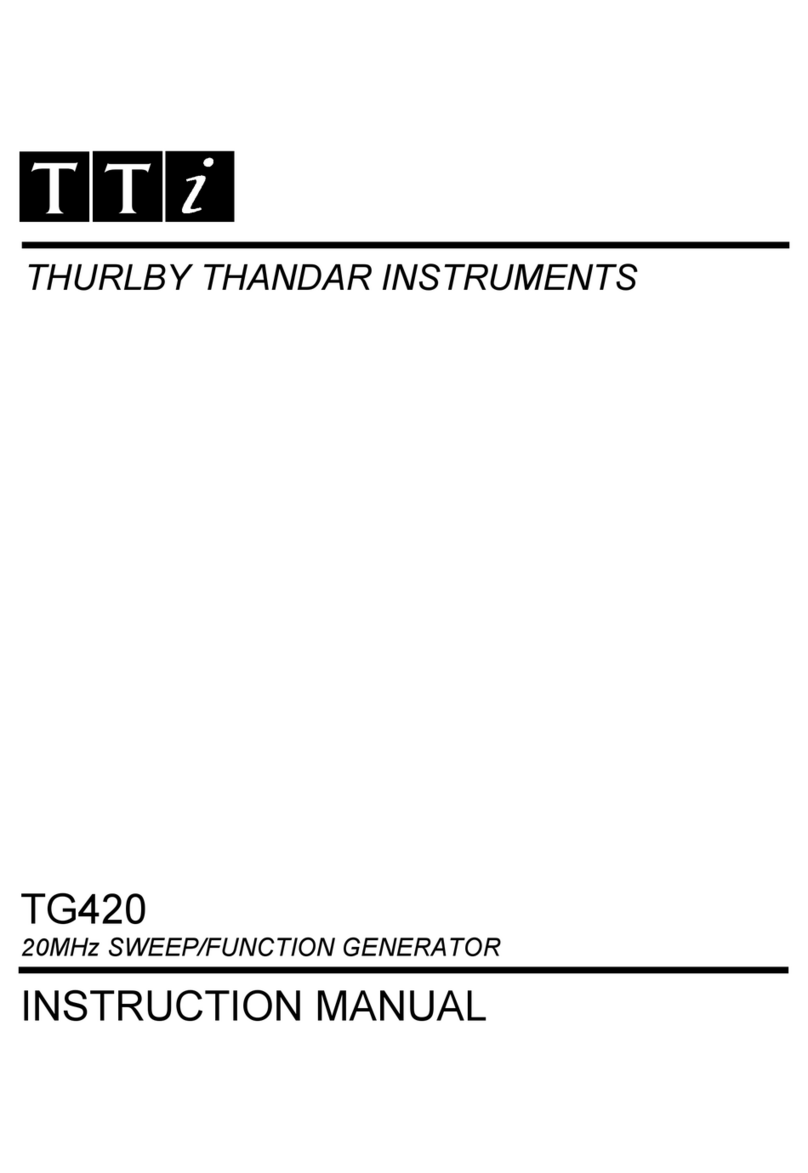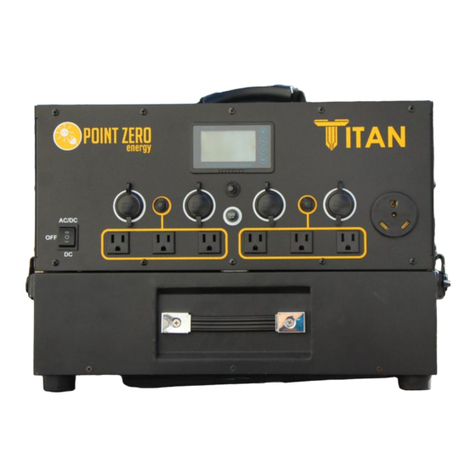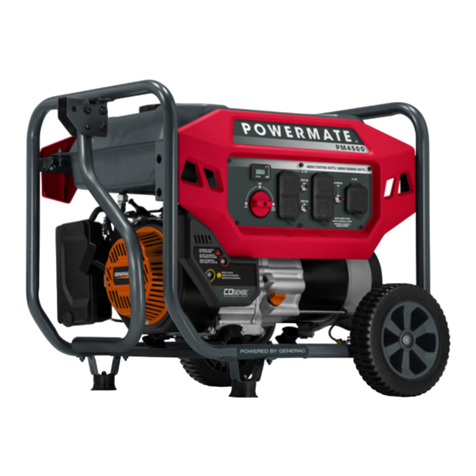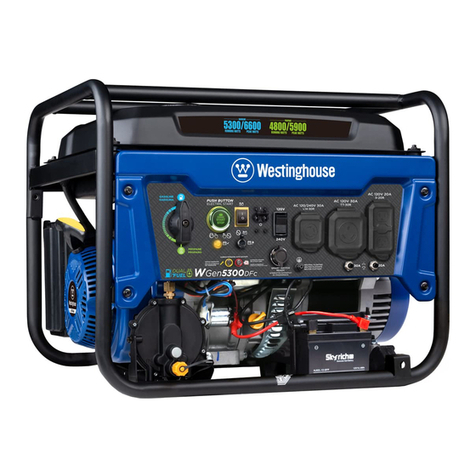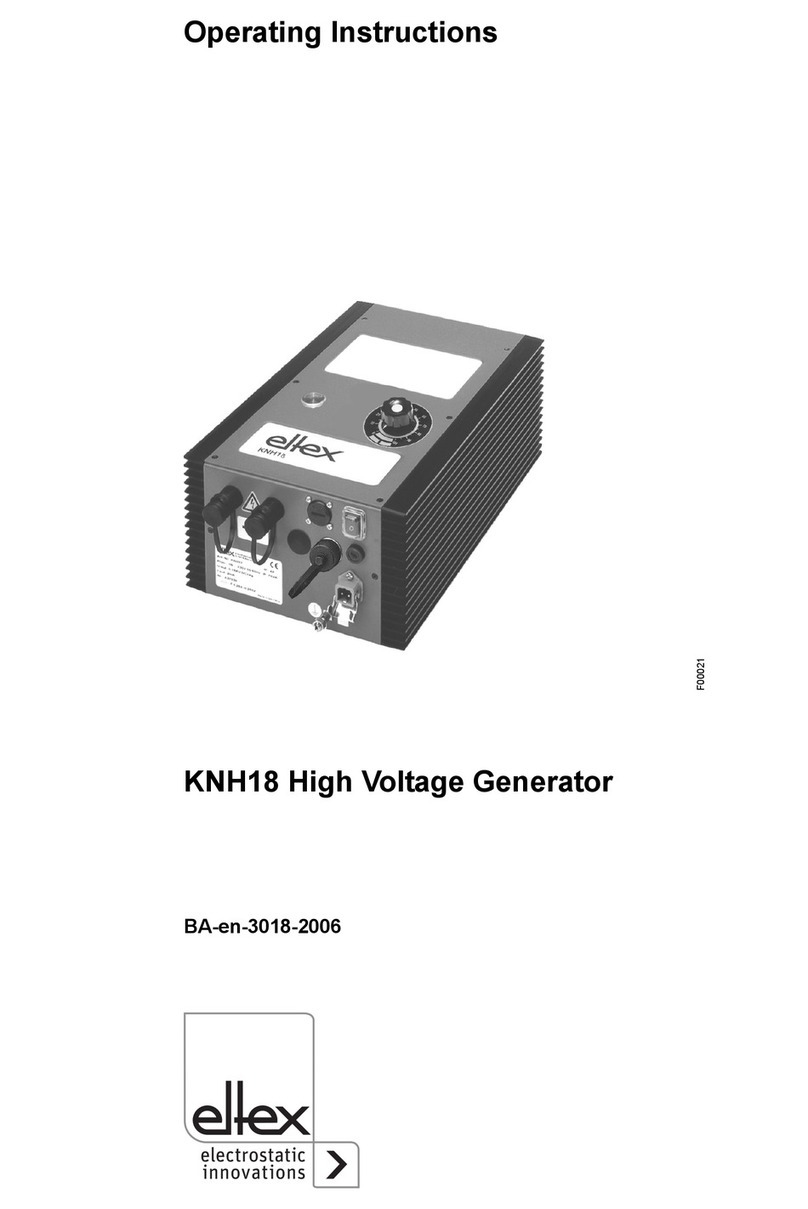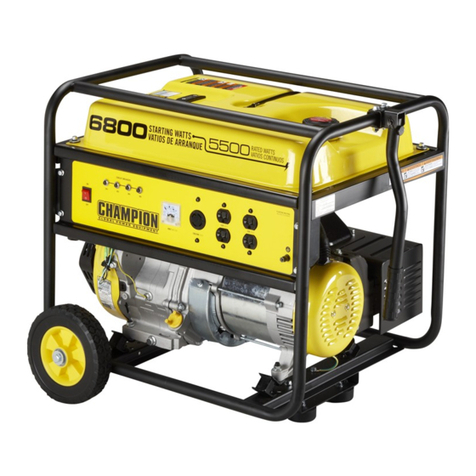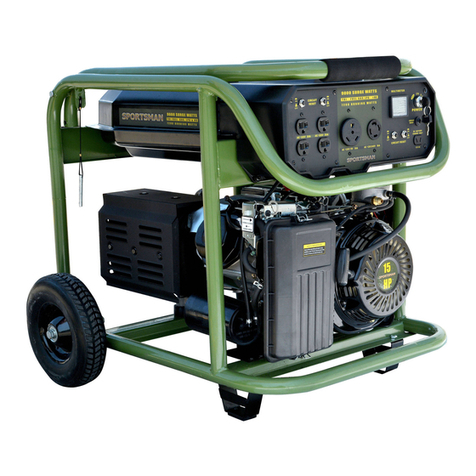19
Betrieb
Netzstrom
Der ON/OFF (EIN/AUS) -Schalter ist an der rückseitigen Tafel des Instruments.
Frequenzwahl
Der Frequenzbereich wird durch einen Sieben-Positionen-Bereichswiderstands-schalter mit
Feineinstellung durch kalibrierten Feineinsteller gewählt. Durch Eindrücken des SYM-Knopfes
wird die angezeigte Frequenz durch 10 geteilt am TG210; am TG215/TG230 zeigt die
Digitalanzeige die resultierende Ausgangsfrequenz richtig an. Die SYMMETRY (SYMMETRIE) -
Steuerung variiert die relative Einschaltdauer von 1:9 bis 9:1, um Sägezahn- und variable
Impulsbreiten- Wellenformen zu erzeugen. Optimale Leistung der SYMMETRY-Steuerung wird
auf der oberen Dekade jedes Frequenzbereichs erzielt.
TG215/TG230: Wenn DISPLAY SELECT (ANZEIGE-WAHL) auf Frequenz eingestellt ist, nimmt
die automatische Meßbereichswahl reziproke Messungen nach unten bis 2,30 Hz vor (im 2-Hz-
Bereich 0,230 Hz). Die Aktualisierungsrate in diesem Modus beträgt 130 ms bzw.
1 Signalformperiode, je nachdem, welcher Zeitraum der längere ist. Unter diesen Frequenzen
wird eine schnelle Meßwertaktualisierung aufrecht erhalten, was durch Änderung der
Meßmethode geschieht; allerdings wird dabei an Genauigkeit eingebüßt; siehe hierzu Technische
Daten. Wird an SWEEP IN (WOBBEL-EIN) eine Spannung angelegt, so erfolgt eine genaue
Anzeige der neuen Generatorfrequenz.
Wird SYM (SYMMETRIE) gewählt, erfolgt die Umschaltung der Frequenzmessung im 20-Hz- und
2-Hz-Bereich bei 0,230 Hz.
Funktionswahl
Die Ausgangswellenform wird gewählt, indem man einen der drei Funktionsknöpfe eindrückt, um
Sinus-, Rechteck- oder Dreieck-Wellenform zu erhalten. Wenn alle drei Schalter heraus sind
(wird erreicht, indem man einen davon nur halb ein-drückt), wird der Ausgang nur ein GS-Pegel
sein; dies ist nützlich, da es die Eingabeschwellwertprüfung eines Stromkreises ermöglicht,
anstatt eine externe GS-Versorgung anschließen zu müssen.
Hauptausgang
Die Amplitude des 50ΩHAUPT-Ausgangs wird durch den 2-Positions- ATTENUATOR
(DÄMPFER-) Schalter und die AMPLITUDEN-Steuerung geregelt. Der maximale Ausgang ist 20
V Spitze-zu-Spitze von 50Ωund 10 V Spitze-zu-Spitze bei Abschluß mit einer 50ΩLast.
Die AMPLITUDEN-Steuerung hat mehr als 40dB Bereich, und bei Verwendung in Ver- bindung
mit dem ATTENUATOR (DÄMPFER) kann ein Bereich von 0 dB bis -60 dB erzielt werden. Damit
wird ein Bereich von 20 V Spitze-zu-Spitze bis herab auf 20 mV Spitze-zu-Spitze oder 10 V
Spitze-zu-Spitze bis herab auf 30 mV Spitze- zu-Spitze über 50Ωgeboten.
Größere Dämpfung kann erzielt werden, indem man BNC-Dämpfungsglieder in Stan-
dardbauweise (50Ω) verwendet. Zur Aufrechterhaltung der Wellenform-Integrität ist nur 50Ω
Kabel zu benutzen, und das empfangende Ende ist mit einer 50ΩLast abzuschließen. Der 50Ω
HAUPT-Ausgang ist bei maximalem Ausgangswert 10 Minuten lang und bei niedrigeren
Ausgangswerten entsprechend länger kurzschlußsicher. Beschädigung wird jedoch eintreten,
falls eine externe Spannung an die Ausgangs-buchse angeschlossen wird.
TG210/TG215: Der HAUPT-Ausgang (MAIN) steht auch von einer Steckbuchse 600 Ohm zur
Verfugung. Die 50Ωund 600Ω Steckbuchsen sind nicht unabhängig und sollten nicht zusammen
verwendet werden.
TG215/TG230: wenn DISPLAY SELECT (ANZEIGE-WAHL) auf Amplitude eingestellt ist, wird
die Spitze-zu-Spitze Amplitude des HAUPT-Ausgangs angezeigt. Die Anzeige zeigt
Leerlaufspannung (emf = EMK) an; die tatsächliche Spannung an der Buchse wird halb so groß
wie der angezeigte Wert sein, wenn der Ausgang mit seiner charakteristischen Impedanz
abgeschlossen ist.





















